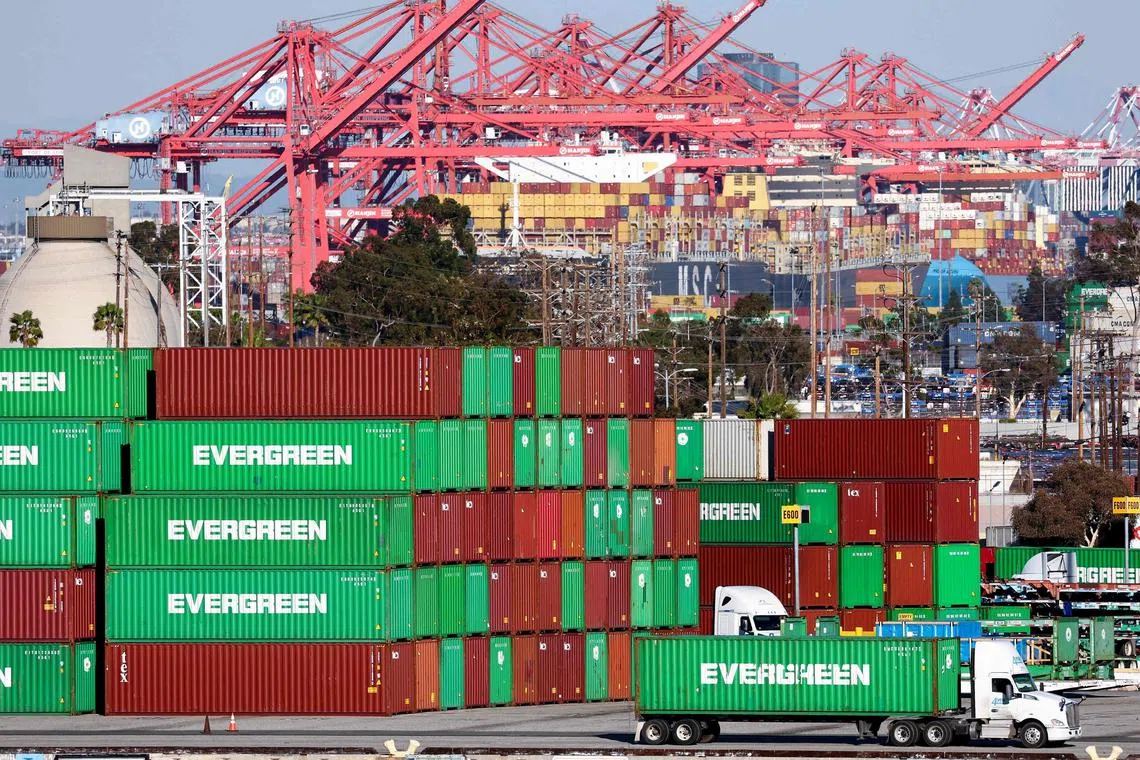US-China goods trade hits record even as political split widens
Sign up now: Get ST's newsletters delivered to your inbox

The annual goods-trade deficit with China widened 8 per cent to US$382.9 billion.
PHOTO: AFP
Follow topic:
WASHINGTON - Trade in goods between the United States and China climbed to a record in 2022.
It is a reminder that consumers and companies in the world’s two biggest economies remain deeply connected while their governments diverge on a range of economic and political issues.
Total merchandise trade between the two countries rose to US$690.6 billion (S$915 billion) in 2022, exceeding the record set in 2018, Commerce Department data showed on Tuesday. The data is not adjusted for inflation.
The annual goods-trade deficit with China widened
The deepening trade ties between the countries risk being challenged by the widening split between Washington and Beijing.
They have clashed on issues including human rights, trade and competition for technology and markets.
The data also comes at a particularly low point between the two amid the shooting down last week of an alleged Chinese spy balloon over US territory.
Washington is pressing ahead with plans to curb China’s access to sensitive semiconductor technology
It is also working to lessen US reliance on China for merchandise.
Washington is encouraging Western companies to invest in what Treasury Secretary Janet Yellen has termed “trusted trading partners” such as India, in a process known as friendshoring.
The value of merchandise exports to China climbed to an all-time high of US$153.8 billion, while imports increased to US$536.8 billion, just under the record set in 2018.
“It shows that consumers have minds of their own,” said Mr William Reinsch, who served as a top Commerce official in the Clinton administration. He is now a senior adviser at the Centre for Strategic and International Studies, a Washington-based think-tank.
“At the market level, we’re still doing a lot of business, despite the efforts of both governments. The macro relationship hasn’t changed that much; we’re still trading a lot.”
Tariff strategy
The Biden administration has kept in place a set of tariffs imposed under former president Donald Trump and confronted Beijing over what it sees as human rights abuses, unfair trade practices and threats to US national security.
But hundreds of US businesses big and small have made a fresh push for the removal of the levies – which were instituted in waves starting in 2018 – saying they have raised their input costs at a time of accelerating inflation.
As the White House reviews the tariffs, there is little indication that it is inclined to significantly roll back the tariffs on the imports that span industrial inputs – such as microchips and chemicals – to consumer merchandise.
The tariffs are kept as leverage against China amid concerns that repealing them would be politically risky.
Chips flashpoint
The chip industry continues to be a major flashpoint for trade tensions.
Though China is the biggest maker of phones and computers, US companies still control most of the underlying chip technology, and it tightened restrictions on exports of semiconductors last year.
Beijing in December filed a dispute with the World Trade Organisation trying to overturn US-imposed export controls.
The curbs aim to limit China’s ability to develop a domestic semiconductor industry and equip its military.
Officials on both sides are looking at ways to better manage the differences between the two powers, with Ms Yellen and Vice-Premier Liu He holding in-person meetings in Zurich in January.
That followed face-to-face discussions held by President Joe Biden and President Xi Jinping in Bali, Indonesia, in November.
But the efforts to thaw relations took a knock after the Pentagon detected a suspected Chinese surveillance balloon lingering at high altitude over sensitive nuclear sites in Montana.
The incident led to the postponement of a visit to China by Secretary of State Antony Blinken.
Trading partners
China maintained its third place among the top US trading partners for goods in 2022, accounting for 13 per cent of total trade.
Canada kept the top spot with a 14.9 per cent share valued at US$793.8 billion, while Mexico was second at 14.7 per cent, or US$779.3 billion.
The only change in the top 10 rankings relative to 2021 was Vietnam, which rose two spots to eighth position, with total trade of US$138.9 billion. BLOOMBERG

